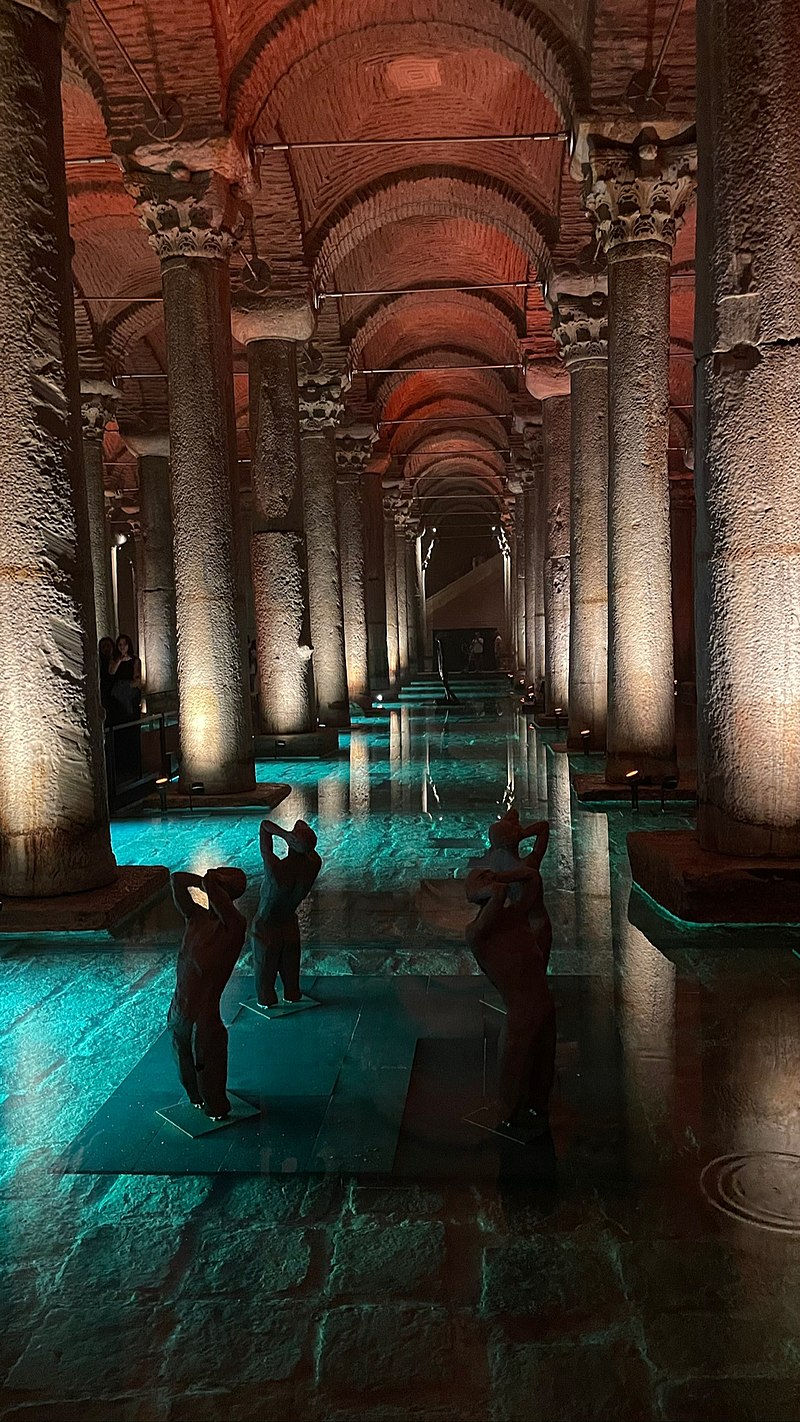- Home
- Blog
- Write for Us
- Travel Shop
- Type of TripsSolo Female TravelGirls Trip DestinationsAdventureBudget TravelLuxury TravelSolo Female TravelGirls Trip DestinationsAdventureBudget TravelLuxury Travel
- Resources

Do you enjoy exploring dark, spooky places? If so, you’ll love this list of the top 5 underground spooky places to visit in the world. From abandoned subway stations to hidden torture chambers, these places are sure to give you the chills. So, if you’re looking for a scare, read on!
Table of Contents

If you’re looking for a truly spooky underground place to explore, then you need to check out the Cu Chi Tunnels in Vietnam. These tunnels were used by the Viet Cong during the Vietnam War, and they’re now open to tourists. The tunnels are dark, dank, and narrow, and you can’t help but feel like you’re in a horror movie when you’re walking through them. There are sections where you have to crawl through tiny spaces, and it’s easy to understand how the Viet Cong were able to use them to ambush the enemy. It’s an absolutely eerie experience, and it’s one that you’ll never forget.
The Cu Chi Tunnels cover an extensive area, with multiple layers of underground tunnels, some reaching depths of up to 10 meters. These tunnels formed a complex labyrinth, complete with trapdoors, booby traps, living quarters, and storage rooms. They were ingeniously designed to provide protection from aerial and ground attacks. The network allowed Viet Cong fighters to move discreetly between different tunnel segments and pop up to launch surprise attacks on American and South Vietnamese forces.
The tunnel system is an extensive and complex network that spans over 250 kilometers (about 155 miles). It includes living quarters, storage rooms, command centers, weapon caches, and even hospitals, providing a hidden and secure environment for the Viet Cong.
The Cu Chi Tunnels were strategically located near the Ho Chi Minh Trail, a crucial supply route for North Vietnamese forces. The tunnels allowed the Viet Cong to launch surprise attacks on American and South Vietnamese forces and then disappear swiftly into the underground network.
Today, the Cu Chi Tunnels are a popular tourist attraction, offering visitors a unique opportunity to explore a portion of the tunnel system. Guided tours provide insights into the history, construction, and daily life within the tunnels.
Visitors can witness demonstrations of the tunnel entrances, explore sections of the tunnels adapted for tourism, and see exhibits showcasing the various tools and weapons used by the Viet Cong during the war.
The Cu Chi Tunnels provide an educational experience, shedding light on the hardships faced by the Vietnamese people during the war. Visitors gain a deeper understanding of the resourcefulness, determination, and resilience that characterized the efforts of those who lived and fought in the tunnels.
The War Remnants Museum in Ho Chi Minh City complements the Cu Chi Tunnels experience by providing additional historical context and showcasing artifacts related to the Vietnam War.

If you’re looking for a truly spooky experience, you need to check out the Paris Catacombs. This is a series of tunnels and caves that have been converted into a burial ground, and it’s home to the remains of over six million people. There’s something about the darkness and the eeriness of all those bones that make it a really haunted place. If you’re brave enough, you can wander through the tunnels and see for yourself.
The Catacombs originated in the late 18th century as a solution to the problem of overflowing cemeteries in Paris. The bones were transferred from various city cemeteries to the abandoned quarries beneath the city to create more space. The Catacombs are located in the Montparnasse area of Paris. The underground network covers an extensive area, with tunnels stretching for kilometers. However, only a small portion is open to the public.
The remains of approximately six million people were transferred to the Catacombs between the late 18th and mid-19th centuries. The bones are arranged in a meticulous manner, often forming walls and decorative patterns.
Visitors enter the Catacombs through a small entrance and descend a spiral staircase into the underground tunnels. The atmosphere is dark, cool, and eerily quiet, contributing to a unique and somewhat haunting experience. The bones are arranged in various ways, including stacked skulls, neatly aligned femurs, and artistic arrangements. Certain sections feature inscriptions and plaques with messages and poems related to mortality.
A limited portion of the Catacombs is open to the public for guided tours. Visitors can explore the underground passages, learn about the history of the site, and witness the unique arrangements of bones.
The Catacombs have inspired various myths, legends, and tales of mystery. Some people have explored restricted sections of the Catacombs, leading to stories of secret societies, paranormal activities, and urban exploration.
Due to the complex and maze-like nature of the Catacombs, visitors are required to take guided tours. Unauthorized access to restricted areas is strictly prohibited for safety reasons.
In summary, the Paris Catacombs offers a fascinating and somewhat eerie journey into the city’s past. While it may not be inherently spooky, the atmosphere, historical context, and the sheer scale of skeletal arrangements create a distinctive experience that captivates visitors and sparks the imagination.
Check out: Travel Hacking: How to Find Cheap Flights and Save Big on Your Next Tri

If you’re looking for a creepy experience, you need to visit the Capuchin Crypt in Rome. This place is home to the remains of almost 4,000 monks, and their mummified bodies are on display. Eek! The crypt was originally used as a burial site, but when the bones started getting too crowded, they were moved to the walls and ceilings. Now, visitors can see them hanging down from the ceilings and propped up against the walls. If you’re brave enough, go ahead and check out this spine-tingling spot on your next trip to Rome. Just be warned—it’s not for the faint of heart!
The Capuchin Crypt was established in the 17th century. The Capuchin friars, a branch of the Franciscan order, moved to the church, and their order encouraged a strong connection between life and death. As a result, the crypt was created to serve as a burial site for the friars.
The unique feature of the Capuchin Crypt is its decoration using human bones. The skeletal remains of around 3,700 friars were exhumed, and their bones were used to create intricate patterns and designs on the walls and ceilings of several small chapels within the crypt.
The crypt consists of six small chapels, each with its own unique theme and arrangements of bones. These themes often include death, resurrection, and the passage of time. The bones are arranged in the form of intricate designs, such as chandeliers made of skulls and crossbones, creating a visually striking but eerie atmosphere. The dimly lit chambers, the smell of aged bones, and the crypt’s overall ambiance contribute to a spooky and somewhat unsettling atmosphere. Many visitors describe a mix of fascination, respect, and a sense of the macabre when exploring the crypt.
The Capuchin Crypt is open to the public, and visitors can explore the chambers to witness the unique decorations. It’s advisable to check for any specific visitor guidelines or restrictions before planning a visit.
In summary, the Capuchin Crypt is a historically rich and visually distinctive site that may evoke a sense of spookiness due to its unconventional use of human bones for decoration. Visitors are encouraged to approach the crypt with an open mind, acknowledging its religious and cultural significance while appreciating the artistry and symbolism crafted from the remains of the deceased friars.

If you’re looking for a place that’s straight out of a horror movie, you need to check out the Wieliczka Salt Mine in Krakow, Poland. This place is full of spooky underground passageways and tunnels, and it’s said to be haunted by the ghosts of miners who died there. Some people even say that the salt mine is home to a monster called the Wieliczka Worm. Yikes! If you’re brave enough to visit this place, make sure you keep your eyes peeled for any spooky activity.
The Wieliczka Salt Mine has a history dating back to the 13th century, making it one of the world’s oldest salt mines still in operation. Salt extraction at the site continued for over 700 years until 2007 when commercial salt mining ceased.
The Wieliczka Salt Mine was designated as a UNESCO World Heritage Site in 1978, recognizing its cultural and historical importance. It is considered an exceptional example of a functioning medieval salt mine. The mine features an extensive network of tunnels, chambers, and galleries, spanning multiple levels below the surface. Visitors can explore the underground world, discovering a labyrinthine system with salt-carved sculptures and chapels.
One of the most remarkable aspects of the Wieliczka Salt Mine is the intricate artwork carved from salt by miners over the centuries. This includes statues of historical figures, religious sculptures, and even entire chapels adorned with salt chandeliers, altars, and reliefs.
Notably, the St. Kinga’s Chapel is entirely made of salt and is a popular attraction within the mine. The chapel is adorned with salt sculptures, including a life-sized statue of Pope John Paul II, himself a native of Poland.
The Wieliczka Salt Mine is a major tourist attraction, drawing visitors from around the world. Guided tours take visitors through various levels of the mine, providing insights into its history, geology, and the challenging work of salt miners.
The microclimate of the mine is believed to have health benefits. The constant temperature, high humidity, and low concentration of allergens contribute to a therapeutic environment. As a result, there are spa and wellness facilities within the mine.
For a more immersive experience, the mine offers a “Miner’s Route” tour where visitors can dress in miner’s clothing, use mining tools, and gain a deeper understanding of the daily life and challenges faced by historical miners.
In summary, the Wieliczka Salt Mine is a fascinating underground complex with a rich history, stunning salt-carved sculptures, and unique geological features. While it may not be considered spooky, the subterranean environment and the sheer scale of the underground chambers contribute to a sense of wonder and awe.

As you’ve just read, there are some creepy and spooky underground places scattered across the globe. Some are abandoned, some are still in use – but all of them have something eerie about them that makes your skin crawl.
And always remember to Travel Till You Drop!


Hi, Jill Here
Hi! I’m Jill, a Dallas, Texas girl traveling the world. After a career in the Air Force and touring over 50 countries later, my need to explore keeps going! It’s time to rock & roll and find all those places I never knew I was missing.
Table of Contents
Join me to get exclusive travel tips, giveaways and more!
Gallery
Copyright © 2023 | All Right Reserved